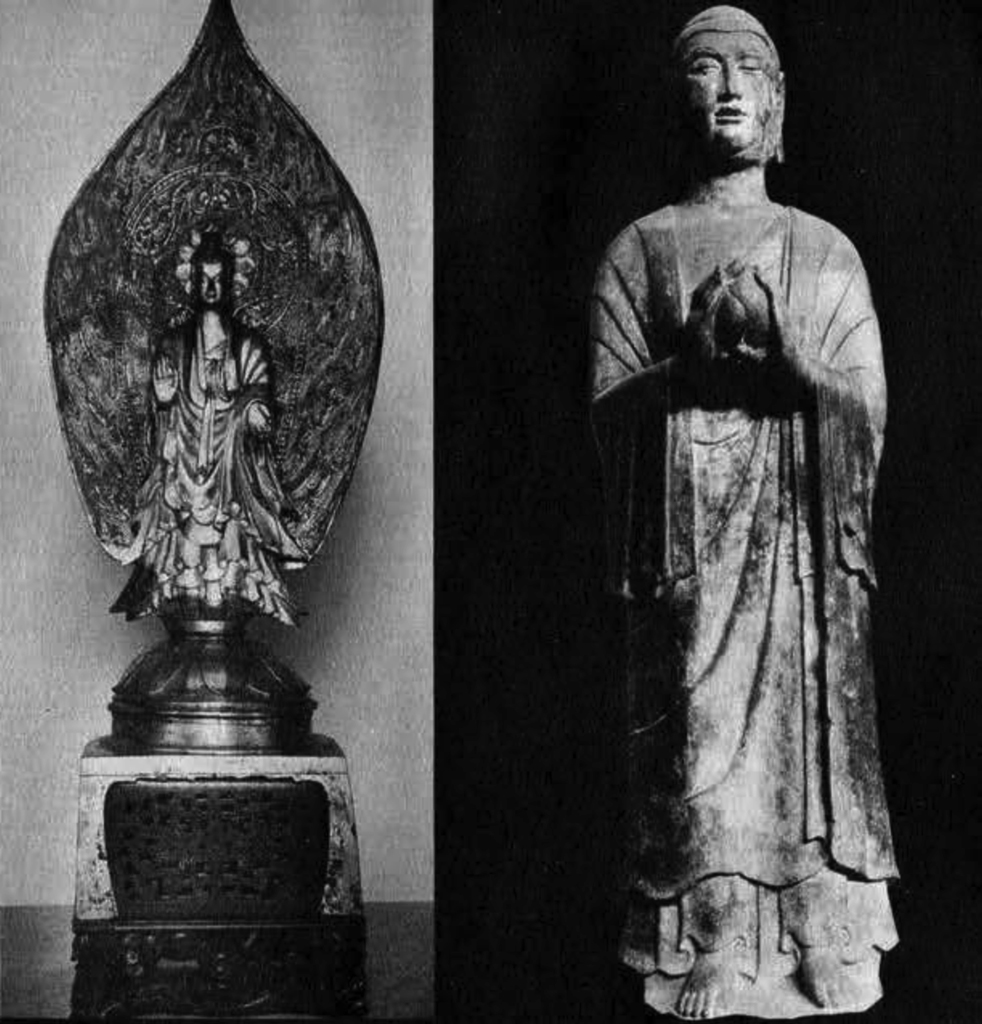THE Museum was gratified to be invited and pleased to be in a position to lend an important group of Chinese objects for the forth-coming International Exhibition of Chinese Art to be held under the auspices of the Royal Academy in Burlington House, London. The Exhibition, probably the most comprehensive ever organized in this field, will open on November 25th and run through March of next year, and examples have been widely assembled from China, the United States and Europe. The names of the Committee in charge, under the directorship of Sir Percival David, Bart., assure an enlightened choice and arrangement of the collections, while the successes of similar exhibitions in other fields in Burlington House insure wide interest and a large attendance.

Museum Object Numbers: C445 / C400
It should not be surprising to members of the Museum, though it may be to many Philadelphians, that almost every one of the objects being sent from here is of unrivalled importance; the pieces of sculpture constituting probably the most outstanding group to be borrowed from any one museum here or abroad. The major pieces that will be shown in London are illustrated in the centre plate of this issue of the Bulletin. Space does not permit nor, in general, does black and white reproduction justify illustration of the two important paintings, the carpet, the silver and bronze mirror, the inscribed bronze Hu or the Chün Yao pottery jar also included in the loan, although it is felt that these, too, will find an equally prominent place in the Exhibition as finally installed. It is of perhaps especial interest to record that the two parts of the famous handscroll “Spring Morning in the Palace Garden” attributed to Chou Wen Chu (flourished 970 A. D.) of which the Museum owns the last and larger part, will be brought together at the Exhibition, the fragment of the beginning being kindly lent by its owner, Dr. Bernard Berenson. For how many years the two fragments have been separated is not known, but to those familiar with the great charm and suavity of this masterpiece it will be a gratification to see the pieces united-even if only for six months, and to be able to study the composition as a whole.

Museum Object Number: C395
Naturally, of the pieces of sculpture the outstanding piece is the relief from the Tomb of the Emperor T’ang T’ai Tsung picturing his horse, “Whirlwind Victory,” wounded in battle and having an arrow removed from his chest by the General Ch’in Hsing-who lent his own horse to the Emperor when “Whirlwind Victory” was impaled. This slab and its mate (which was not borrowed) both belonging to the Museum, and four others from the same tomb in the Provincial Museum collections, are among the most famous extant documents of Chinese historical sculpture. The tradition is that these portraits of his horses were executed under the Emperor’s own direction in 637 A.D. to be placed later about his tomb. Visitors to the Exhibition may have occasion to note the ghost of incised floral tracery that is still to be seen around the edges of the slab, and but to look at the quality of this engraved decoration, so typical to the early years of T’ang, is to set at naught the arguments that have been advanced that these six slabs may be Sung copies of the originals.

Museum Object Numbers: C3551.1, C3551.2 / C151
The stela of the “Lotus of the Good Law” (lower centre in the Plate) is an exquisite piece of detailed Buddhist sculpture rich, too, in iconographic interest. It is dated 575 A. D. and has been ably and fully published by Miss Fernald in Eastern Art and should notably strengthen the Exhibition, as will to a lesser degree the charming pair of bodhisattva executed in grey limestone and the two gilt bronze statuettes. The great glazed-pottery Lohan (lower right) will, in the London Exhibition, be brought nearer to one of its mates in the British Museum than it has been for a score of years. Of the six extant members of the original set-eighteen in all, made perhaps as early as the T’ang dynasty-ours, and that belonging to the British Museum, seem closest to perfection: visitors to London will have a better opportunity to judge them than has been accorded for a long time.
The seated stone lion, so characteristic of the vigorous animal sculpture of the epochs immediately preceding the T’ang dynasty, its features contorted in a silent and rather benevolent roar, goes to London as a representative of the three outstanding specimens of this sort in the possession of the Museum. His two larger brothers, familiar to all visitors and in monumental artistic importance probably the Museum’s greatest possessions, because of their huge weight and the difficulty of handling could not be sent.

Museum Object Numbers: C405A / C111 / C429 / C112 / C66A, C66B
Finally, there is the sweet and graceful seated Buddha Meditating, dating no later than the fourteenth century and perhaps executed even earlier. It is not a piece of sculpture to be immediately appreciated at first: its charm and quality increase upon familiarity and there is a strange repose even in the restless swirls of the drapery that enhance the extraordinary sense of far distant thought behind the half-closed eyes.
These pieces make up, we feel, a notable contribution which Philadelphia is making to an Exhibition that will be long remembered.
H. H. F. J.

